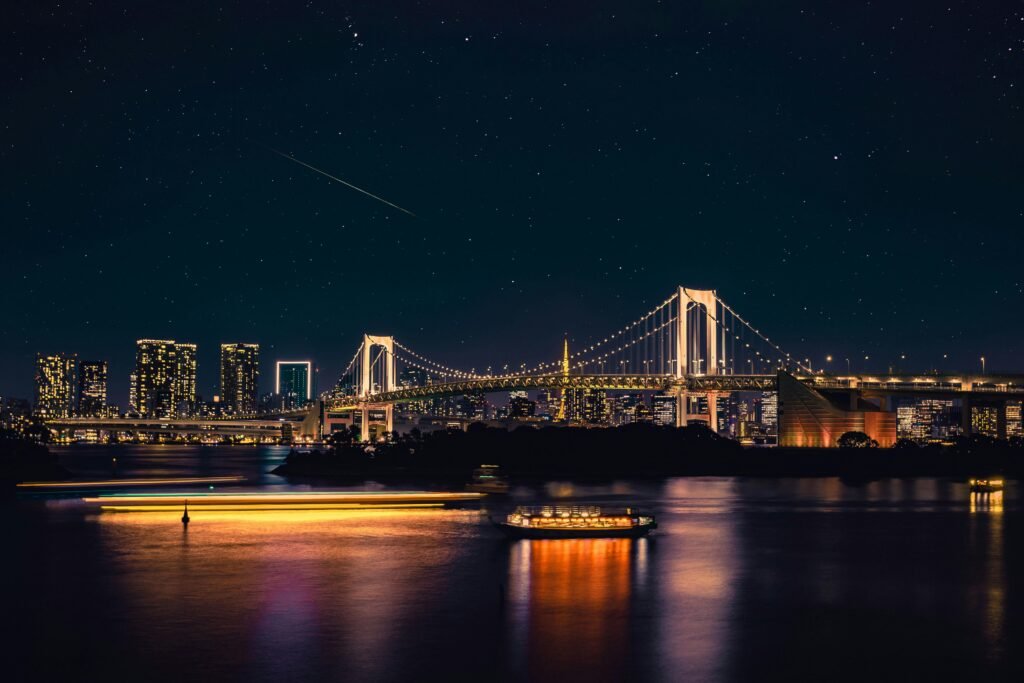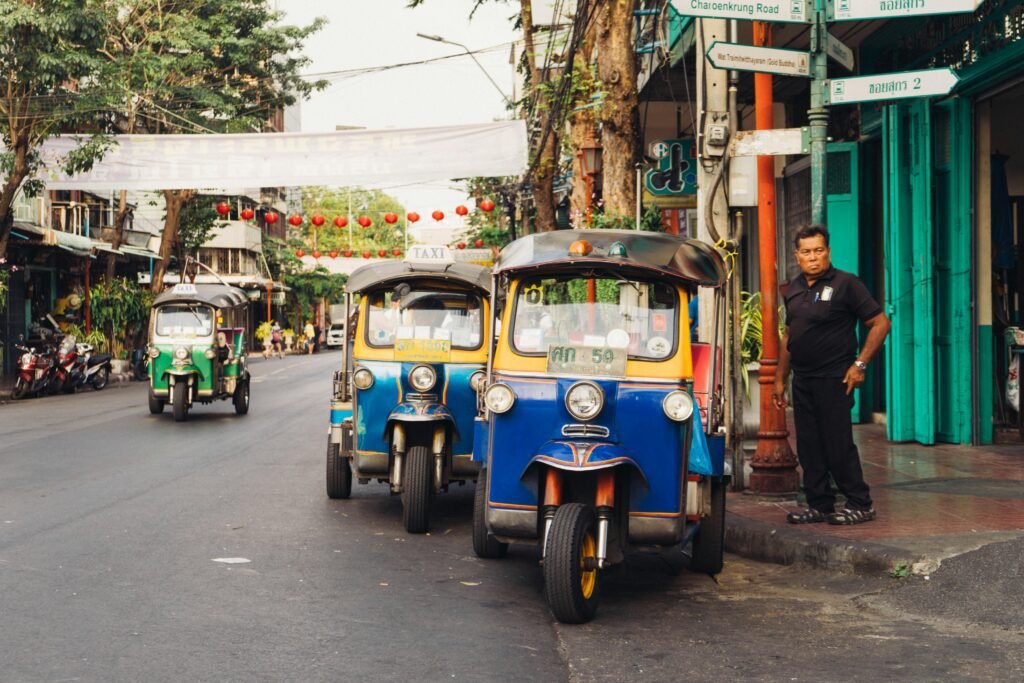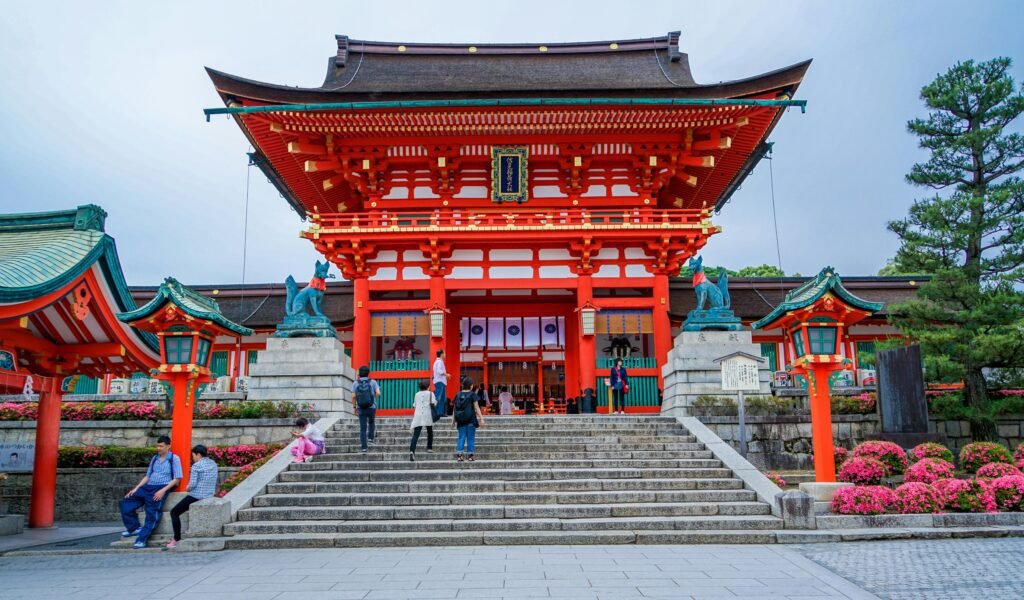
Tokyo is a city of dazzling contrasts, quiet shrines tucked behind neon-lit avenues; century-old sushi counters next to pop-up dessert labs; tiny laneway bars a lift ride from sky-high cocktail lounges. For UK and international travellers, it’s a destination that rewards curiosity and good planning. This guide gathers everything you need for an easy, rewarding visit, history and context, neighbourhood highlights, practical tips, sample itineraries, and ideas tailored to families, couples and solo travellers. We’ll also draw connections to broader UK travel themes, from heritage tourism to city-break culture and rail-based day trips.
Tokyo at a Glance
Tokyo began as Edo, a fishing village that rose to prominence when the Tokugawa shogunate established its base here in the early 17th century. After the Meiji Restoration in 1868, the city was renamed Tokyo (“eastern capital”) and rapidly modernised. Today it’s one of the world’s great metropolises – highly efficient, endlessly creative, and surprisingly gentle at street level.
Why it feels different:
- Human‑scaled micro‑neighbourhoods. Even in the busiest wards, you’ll find residential lanes, pocket parks and family‑run shops between towers.
- Polite pace and quiet order. Trains run on time, queues form naturally, and everyday courtesy sets the tone.
- Deep continuity. Shinto shrines and Buddhist temples coexist with cutting‑edge design, tech and fashion.
Key Facts & Useful Basics
- Airports: Haneda (HND) is closest to the centre; Narita (NRT) is further but well connected by express trains and coaches.
- Transport: Trains and subways are the backbone. The JR Yamanote Line loops the core, linking Shinjuku, Shibuya, Harajuku, Tokyo, Ueno and Akihabara.
- Payment: Cash remains useful, but contactless and cards are widely accepted. Convenience stores have reliable ATMs.
- Connectivity: eSIMs and pocket Wi‑Fi are easy to arrange; public Wi‑Fi exists but isn’t ubiquitous.
- Power: 100V, type A/B plugs. UK travellers need an adaptor (and a converter only for certain appliances, most phone/laptop chargers adapt fine).
- Language: English signage is good on transport. A few Japanese phrases go a long way; staff will usually try to help.
- Etiquette essentials: No loud calls on trains; stand on one side of escalators (varies by area); remove shoes where requested; tipping isn’t customary.
Tokyo’s Neighbourhoods: What to See and Why
Think of Tokyo as a constellation of villages, each with a distinct mood. Here’s how to navigate by vibe, with highlights for different travellers.
Shinjuku – Vertical City, Big‑Sky Views
- Why go: Skyscraper canyons, panoramic observatories, late‑night dining, and the restful green of Shinjuku Gyoen.
- Don’t miss: A sunset view from a tower observatory; a morning stroll in Shinjuku Gyoen; a yakitori alley for casual eats.
- Good for: First‑timers, families who want parks + easy transport, couples chasing skyline moments.
Shibuya & Harajuku – Youth Culture and Fashion Pulse
- Why go: The famous crossing, streetwear boutiques, crepe stands, and the calm of Meiji Jingu tucked in forested grounds.
- Don’t miss: Crossing Shibuya Scramble; Takeshita‑dori people‑watching; Omotesando’s architectural flagship stores; Meiji Shrine’s torii-lined approach.
- Good for: Trend seekers, photography fans, teens and tweens, coffee lovers.
Asakusa – Old‑Tokyo Atmosphere
- Why go: Senso‑ji, Tokyo’s oldest temple; lantern‑lit Nakamise shopping street; rickshaws and riverside views.
- Don’t miss: Early‑morning temple visit before crowds; traditional sweets; a Sumida River boat hop to Odaiba.
- Good for: Families (easy history and snacks), culture hunters, anyone who loves classic streetscapes.
Ueno & Yanaka – Museums and Slow Strolls
- Why go: Ueno Park’s cultural cluster (art, science, and national museums), spring blossoms and a more down‑to‑earth vibe.
- Don’t miss: Tokyo National Museum; a meander through Yanaka Ginza’s retro shopping street.
- Good for: Culture lovers, families seeking space to roam, and budget‑friendly food stops.
Akihabara – Electronics, Anime and Game Arcades
- Why go: Multi‑storey arcades, hobby shops and tech stores.
- Don’t miss: A themed café if you’re curious, or a quick look at retro‑game shops.
- Good for: Teens, collectors, pop‑culture fans; can be a short, targeted visit for others.
Ginza, Nihonbashi & Marunouchi – Classic Elegance
- Why go: Department stores with gourmet depachika basements, galleries, refined bars and the Imperial Palace outer gardens.
- Don’t miss: An evening department‑store food hall sweep; a walk past the palace moat and lawns.
- Good for: Couples, design lovers, anyone keen on Japanese craftsmanship.
Roppongi & Azabudai – Art and After‑Dark
- Why go: Contemporary art museums, design hubs and a cosmopolitan dining scene.
- Don’t miss: A major museum (Mori Art Museum or The National Art Centre) and a post‑gallery cocktail.
- Good for: Couples, solo culture flâneurs, night owls.
Odaiba & Toyosu – Bayfront Playgrounds
- Why go: Futuristic architecture, waterfront walks, family attractions and immersive digital art spaces.
- Don’t miss: A bayfront sunset; a hands‑on science or teamLab experience; Toyosu market dining.
- Good for: Families (space to run, interactive fun), rainy‑day plans.
Western Suburbs – Kichijoji, Mitaka & Shimokitazawa
- Why go: Indie shops, park picnics, jazz kissaten and the Ghibli Museum (advance booking required).
- Don’t miss: Inokashira Park in Kichijoji; vinyl and thrift in Shimokita; café‑hopping.
- Good for: Return visitors, couples who like low‑key local life, solo wanderers.
Signature Sights & Experiences
- Senso‑ji Temple (Asakusa): Tokyo’s spiritual classic lanterns, incense and a lively approach street.
- Meiji Jingu (Harajuku): A woodland shrine where city noise drops away.
- Tokyo Skytree / Tokyo Tower: Iconic viewpoints; choose one based on convenience and weather.
- Imperial Palace Outer Gardens: Formal lawns and moats perfect for a decompressing walk.
- Ueno Park Museums: A full day if you love art, archaeology or natural history.
- Contemporary Art Trifecta: Mori Art Museum, The National Art Centre, and a rotating cast of design venues.
- Ghibli Museum (Mitaka): Whimsical, imaginative and strictly ticketed – plan ahead.
- Food Culture: From ramen counters and standing sushi to refined kaiseki; depachika for picnic feasts; izakaya for small‑plate evenings.
- Nightlife: Tiny bars in Golden Gai, cocktail temples in Ginza, craft beer and natural wine scattered citywide.
Practicalities for a Friction‑Free Trip
Getting There from the UK and Beyond
- Nonstop flights from major European hubs and select UK airports arrive at Haneda most conveniently for central Tokyo; Narita has excellent rail and coach links.
- Jet‑lag strategy: Land, drop bags, take a brisk park walk (Shinjuku Gyoen, Hibiya or Ueno), then an early dinner. Resist the nap.
- Arrival transport tips: Airport rail lines and limousine coaches are straightforward; taxis are spotless but costlier and slower at peak times.
Getting Around the City
- IC cards (Suica/PASMO): Load once, tap everywhere, trains, subways, convenience stores and many vending machines. Phone wallets often work too.
- JR vs Metro: The JR Yamanote Line is a green‑lined loop linking major hubs; the Metro fills in the gaps. Use whichever is quicker – Tokyoites happily mix both.
- Wayfinding: Station exits are numbered; check which exit is closest to your destination to save surface‑level zig‑zagging.
- Taxis & ride‑hailing: Immaculate and safe; card‑friendly; great late at night or with luggage.
- Cycling: A Growing network of share schemes and riverside paths, lovely for sunny days in parks and on the waterfront.
Opening Times, Bookings & Etiquette
- Museums often close on Mondays; check before you go.
- Restaurants may take bookings only by phone or in Japanese; many casual places are walk‑in. Queues are normal, worth it for ramen legends.
- Shrines/temples are typically open from early morning; inner buildings have specific hours.
- Cash & coins are handy for small shrines, markets and mom‑and‑pop eateries.
- No tipping, a smile and “arigatou gozaimasu” is perfect.
Accessibility
- Stations have lifts and priority routes; new builds are notably accessible. Some older restaurants have narrow stairs or tatami rooms with step‑ups – ask staff for alternatives. Pavements are generally smooth and fitted with tactile guidance tiles.
Safety & Comfort
- Tokyo is famously safe; common‑sense precautions suffice. Tap water is drinkable. Convenience stores are 24/7 lifesavers for snacks, toiletries and cashpoints.
Suggested Itineraries
One Great Day: Core Tokyo, Minimal Fuss
07:30 – Senso‑ji at dawn: lanterns glowing, shop shutters painted with Edo‑style scenes.
09:00 – Coffee and taiyaki or melon‑pan on Nakamise’s side streets.
10:00 – Tokyo Skytree (or Tokyo Tower if you prefer a shorter hop later). Clear‑day views make orientation easy.
12:00 – Train to Harajuku. Walk Omotesando’s architectural boulevard and snack your way down Takeshita‑dori.
13:00 – Meiji Jingu: rinse hands at the temizuya, then enjoy a forested amble.
14:30 – Late lunch in Shibuya (ramen or conveyor-belt sushi). Cross the famous scramble and peek into backstreets.
16:00 – Shinjuku Gyoen for a quiet breather.
18:00 – Golden‑hour skyline from a Shinjuku or Shibuya observatory.
19:30 – Yakitori alley dinner; finish with a neighbourhood dessert or tea.
Distance & pace: ~12–14,000 steps; frequent train hops, each 5–15 minutes.
Three Days: First‑Timer Highlights with Breathing Room
Day 1 – East & Centre: Asakusa → Skytree → Nihonbashi/Ginza depachika picnic → Imperial Palace outer gardens → sunset tower view.
Day 2 – Youth Culture & Art: Harajuku shrine walk → Omotesando architecture → Shibuya crossing & coffee → Roppongi art museum → late‑night cocktail bar or jazz kissaten.
Day 3 – Museums & Old Lanes: Ueno Park museums → Yanaka backstreets → Akihabara (short targeted browse) → Sumida River cruise to Odaiba for bay views.
Add‑ons: If you’re a foodie, slot in a market breakfast or an izakaya tour. If you’re travelling with children, swap in Odaiba’s interactive attractions.
Five Days: Tokyo + One or Two Easy Day Trips
Day 1–3: Follow the three‑day plan above at a gentler pace.
Day 4 – Hakone or Kawaguchiko (Mt Fuji views): Hot‑spring towns, open‑air art museums and lake cruises; classic ropeway circuits if the weather cooperates.
Day 5 – Kamakura/Enoshima or Nikko:
- Kamakura/Enoshima: Great Buddha, temple walks, coastal tram rides – relaxed and scenic.
- Nikko: Grand shrines and cedar avenues; cooler mountain air in summer.
Travel notes: Day trips are 60–120 minutes each way by express or limited‑express trains. Reserve seats for peak weekends and holidays.
Micro‑Guides by Traveller Type
Families
- Where to base: Shinjuku (parks and trains), Odaiba (space and play), Asakusa (walkable, historic).
- Top picks: Ueno Zoo and museums, teamLab‑style digital art, river boats, depachika tastings, and hands‑on noodle or sushi classes.
- Practicalities: Many restaurants have high chairs; baby rooms and spotless loos in department stores; prams are fine on wider pavements and in parks.
Couples
- Slow moments: Garden strolls (Hama‑rikyu, Rikugien), onsen day trips in Hakone, sky‑bar sunsets, jazz or whisky bars.
- Memorable meals: Counter sushi, tempura omakase, wagashi & tea sets, or a chef’s choice kaiseki. Book ahead for special nights.
Solo Travellers
- Why it shines: Orderly transport, low hassle, and countless counter‑seats. Staff are helpful; English menus are increasingly common.
- Ideas: Photo walks in Yanaka and Nezu; vinyl hunting in Shimokitazawa; late‑night ramen runs; a baseball game for local colour.
Where to Eat & Drink (Without Overthinking It)
Ramen 101: Tonkotsu (rich pork), shoyu (soy), shio (salt), miso (Hokkaido‑style), and lighter chintan broths. Many shops use ticket machines, choose, pay, and pass the stub.
Sushi spectrum: From standing bars to refined counters. Lunch sets are an approachable way to try good fish without a blowout; conveyor-belt spots are fun for families.
Izakaya evenings: Order small plates, yakitori skewers, karaage chicken, grilled fish, seasonal veg, plus beer, highballs or sake. Expect a lively, friendly atmosphere.
Depachika treasure hunts: Department‑store basements offer bento, salads, tempura, desserts and gift‑ready sweets. Perfect for picnics in parks or your hotel room.
Coffee & tea: Third‑wave roasters abound; for a retro pause, duck into a kissaten for thick toast and siphon coffee. Tea houses range from casual matcha to formal tastings.
Dietary notes: Vegetarian and vegan options are easier to find than a decade ago – search by neighbourhood and look for set menus with clear labelling.
Where to Stay: Areas & Styles
Budget (clean and compact):
- Asakusa / Ueno: Hostels and simple hotels near major sights, parks and affordable food.
- Ikebukuro: Good value with direct links around the city.
Mid‑range (space + convenience):
- Shinjuku / Shibuya: Business‑class hotels with family rooms, excellent transport, lively dining.
- Ginza / Nihonbashi: Polished service, quiet nights and easy access to the airport trains.
Boutique / Luxury (design & views):
- Marunouchi / Otemachi: Sky‑lobbies and top‑tier service steps from Tokyo Station.
- Roppongi / Toranomon: Contemporary design hotels near art museums and upscale dining.
What to look for: Washer/dryers for longer stays, proximity to a JR or Metro hub, and if travelling with children, rooms that accept three or four guests. Capsule hotels are fun for a night if you’re curious (solo only).
The Seasons: When to Go and What Changes
- Spring (late March–April): Cherry blossoms draw crowds; book hotels and museum tickets early. The weather is mild, wear layers and a light jacket.
- Early Summer (June–mid‑July): Rainy season. Expect showers and bring quick‑dry clothing. Gardens are lush and photogenic.
- High Summer (July–August): Hot and humid. Festivals and fireworks light up evenings. Plan midday museum or café breaks.
- Autumn (late October–early December): Clear skies, comfortable temperatures and glorious foliage in parks and nearby mountains.
- Winter (December–February): Crisp, dry days, festive illuminations and excellent visibility from towers. Some attractions close around New Year’s – check dates.
Major events to consider: Sumo tournaments (typically January, May and September in Tokyo), seasonal illumination trails (Nov–Jan), city‑wide design and art festivals, and summer fireworks on the bay and rivers.
Day Trips & Wider Japan from a Tokyo Base
- Kamakura & Enoshima: Zen temples, a giant Buddha and coastal breezes; tram rides between surf cafés and shrines.
- Nikko: Ornate shrines nestled in cedar forests; waterfalls and lakes just beyond.
- Hakone / Fuji Five Lakes: Hot‑spring culture, open‑air art and mountain views; ropeways and lake cruises for families.
- Yokohama: Harbour city with an excellent ramen museum, Chinatown, waterside parks and skyline viewpoints.
- Kawagoe or Chichibu: Edo‑era warehouses and seasonal flower fields; mellow small‑town feel.
Rail passes? If you’re staying largely in Tokyo with one or two day trips, pay‑as‑you‑go is often easiest. Multi‑day rail passes make sense if you’re adding long intercity hops (e.g., Kyoto, Kanazawa, Hiroshima).
Broader UK Tie‑Ins and Travel Themes
Heritage and living culture: Tokyo’s shrine‑and‑skyscraper mix highlights how modern cities can protect historic layers. It’s a reminder to value UK high streets, markets and civic buildings. Pair a Tokyo trip with a return visit to places like York, Bath, Edinburgh or Belfast to trace similar conversations between old and new.
Film, design and fashion: From anime districts to cutting‑edge galleries, Tokyo showcases how popular culture shapes a city break. Back home, think of Manchester’s music heritage, Glasgow’s design pedigree or London’s studios and galleries as creative‑city parallels.
Green space in big cities: Tokyo’s pocket parks and formal gardens are masterclasses in urban calm. For UK inspiration, seek out Kyoto Garden in Holland Park, Japanese‑style corners at Kew, and Japanese gardens in Birmingham and Newcastle.
Rail‑based exploring: Tokyo trains set the benchmark for frequency and clarity. The UK is a superb rail nation too, string together coastal rides in Devon and Cornwall, Scottish Highland lines, or day trips from London to Brighton, Cambridge or Oxford with the same low‑effort, high‑reward mindset you’ll use in Japan.
Planning Checklist (Save This)
- Before you book: Sketch priorities (food, art, temples, parks), then choose a base near a JR/Metro hub.
- Documents: Ensure passport validity; check visa‑free entry rules for your nationality.
- Connectivity: Arrange an eSIM or pocket Wi‑Fi for maps and translation apps.
- Money: Bring a fee‑free card and a small cash float; 7‑Eleven ATMs are reliable.
- Packing: Layers, compact umbrella, comfy shoes; adaptor for type A/B plugs.
- Dining: Make 1–2 key reservations; otherwise embrace queues and counter‑seats.
- Museums & tickets: Book timed slots for popular sites when offered; Mondays can be closure days.
- Etiquette refresher: Quiet phones on trains, no street smoking except in designated zones, and shoes off when requested.
Final Thoughts
Tokyo is vast but not overwhelming when you break it into bite‑sized neighbourhoods and anchor each day around one or two core experiences. Whether you’re planning a family adventure, a design‑minded couple’s escape, or a solo immersion in food and culture, the city rewards both first‑timers and repeat visitors with new layers on every trip. Master the trains, embrace the queues, and let curiosity set your pace. When you’re back in the UK, you may find yourself seeing home cities with fresh eyes, seeking the pocket parks, markets and local rituals that make urban life so compelling.
SEO Block
Trending Keywords: Tokyo travel guide 2025, best time to visit Tokyo, Tokyo itinerary 3 days, where to stay in Tokyo, Tokyo for families, Tokyo for couples, Tokyo solo travel, things to do in Tokyo, Tokyo neighbourhoods guide, Tokyo cherry blossom season, Tokyo first time tips, Tokyo day trips, Tokyo food guide, Tokyo public transport, Tokyo with kids, Tokyo museums, Tokyo nightlife, Tokyo shopping districts, Tokyo itinerary 5 days, Tokyo Haneda vs Narita, Tokyo Japan travel advice, Meiji Shrine, Senso-ji Temple, Shibuya Crossing, Tokyo Skytree
Focus Keyword: Tokyo travel guide 2025
Meta Description: Tokyo Travel Guide – smart, stylish tips, neighbourhood highlights, and easy itineraries for families, couples and solo travellers.
Excerpt (≈60 words): Planning Tokyo? This in‑depth guide covers neighbourhoods, must‑see sights, easy itineraries and practical tips for families, couples and solo travellers. Learn how to navigate trains, where to stay, what to eat and when to go – from cherry blossoms to winter illuminations. A smart, stylish plan for first‑timers and repeat visitors alike.
WordPress Tags: Tokyo travel, Japan trip planning, Tokyo itinerary, Tokyo with kids, Tokyo for couples, Tokyo solo travel, Tokyo neighbourhoods, Tokyo food and drink, Tokyo museums and art, Tokyo day trips, Tokyo transport, Haneda vs Narita, cherry blossom season, Tokyo hotels, Japanese etiquette

